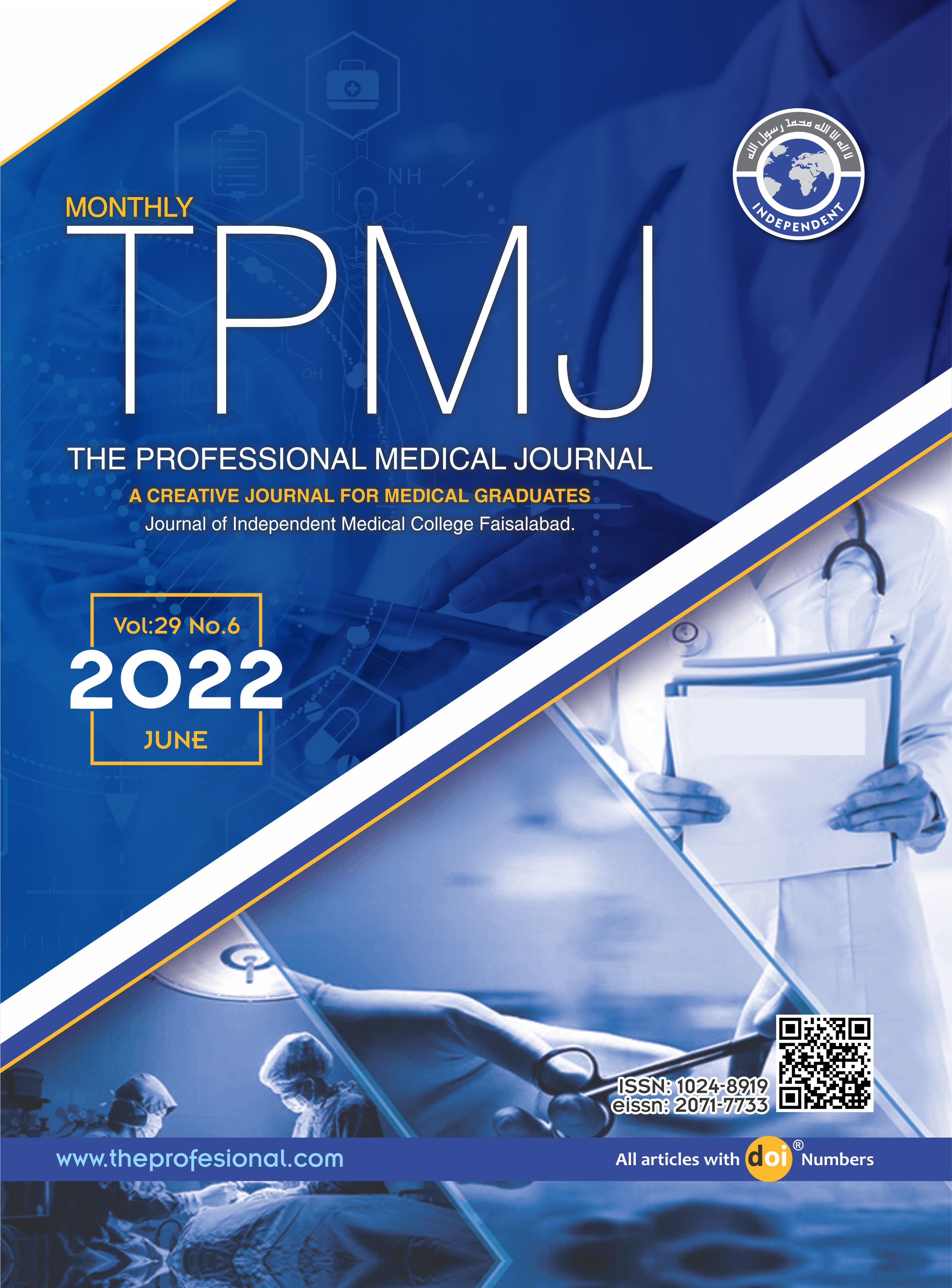Spectrophotometric evaluation of effects of heavy metals on human erythrocytes.
DOI:
https://doi.org/10.29309/TPMJ/2022.29.06.6889Keywords:
Erythrocytes, Heavy, Metal, SpectrophotometryAbstract
Objective: To study the effect of heavy metals on the human erythrocytes. Study Design: Experimental Study. Setting: Department of Chemistry Hazara University, Mansehra. Period: January 2017 to June 2017. Material & Methods: Erythrocytes were isolated and prepared by the standard method from blood samples. The standard absorption spectra were recorded in the range of 200-800nm using double‐beam UV‐visible spectrophotometer. Heavy metals were prepared in laboratory as per given protocol. Erythrocyte samples were treated with prepared metals. Absorbance of these samples was recorded. The spectrum of these treated samples was compared with the standard spectra of erythrocytes to look for any variations that might have occurred. Results: It was observed that human erythrocytes exhibited altered behavior with each metal which was evident by shifting in peaks in UV/Visible spectra. The absorption maxima changed from higher to lower wavelengths with every metal tested. It was also observed that this change was more pronounced in case of Lead, Cadmium and Mercury while similar changes were also observed with Arsenic and Selenium. Conclusion: This study showed that erythrocytes exhibited different behavior with different metals as evident by the shift of peaks in UV/Visible spectra. The absorption maxima were shifted towards lower wavelengths suggesting that these metals do exert an effect on human erythrocytes.
Downloads
Published
Issue
Section
License
Copyright (c) 2022 The Professional Medical Journal

This work is licensed under a Creative Commons Attribution-NonCommercial 4.0 International License.


